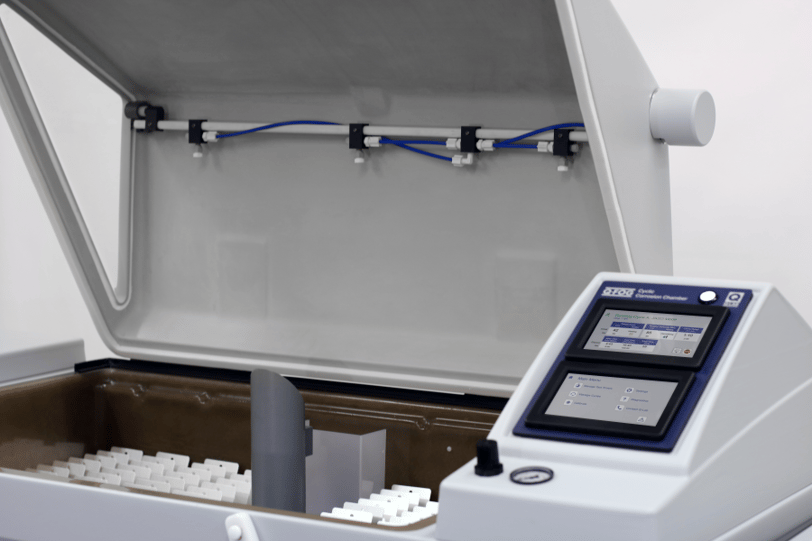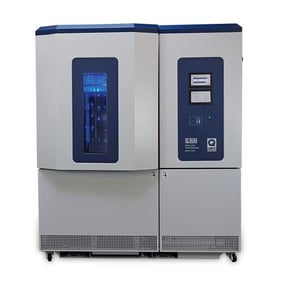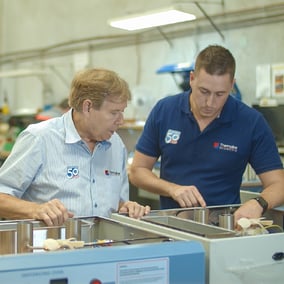
Learn about the importance of cyclic corrosion testing and how it helps in evaluating the durability and corrosion resistance of materials.
Understanding Corrosion and Its Impact
Corrosion is a natural process that deteriorates materials, such as metals, due to chemical reactions with their surroundings. It can have a significant impact on the performance, appearance, and lifespan of various products and structures. Understanding corrosion and its impact is crucial for industries that rely on materials to ensure their durability and reliability.
Corrosion can cause structural failures, decrease the mechanical properties of materials, and compromise their functionality. It can also lead to financial losses due to repairs, replacements, and maintenance. Therefore, preventing and mitigating corrosion is of utmost importance for industries that deal with materials exposed to harsh environments.
Importance of Cyclic Corrosion Testing
Cyclic corrosion testing is a vital tool in evaluating the durability and corrosion resistance of materials. It involves subjecting test specimens to a combination of corrosive environments, including salt spray, humidity, and temperature variations. By simulating real-world conditions, cyclic corrosion testing helps identify potential weaknesses in materials and coatings, allowing manufacturers to improve their products' resistance to corrosion.
The Process of Cyclic Corrosion Testing
Cyclic corrosion testing typically involves exposing test specimens to a series of environmental cycles. The duration and intensity of each cycle can vary depending on the specific requirements and standards. The test specimens are often coated with protective materials, such as paints or coatings, to evaluate their effectiveness in preventing corrosion.
During the testing process, the specimens are periodically inspected to assess their corrosion resistance and any signs of degradation. This includes visual inspections, measurements of corrosion rates, and evaluation of coating adhesion. The results obtained from cyclic corrosion testing provide valuable information about the materials' performance, allowing manufacturers to optimize their products' resistance to corrosion.
Benefits of Cyclic Corrosion Testing
Cyclic corrosion testing offers several benefits for industries and manufacturers. Firstly, it helps in the development and improvement of corrosion-resistant materials and coatings. By identifying weaknesses and potential failure points, manufacturers can make design modifications and select more suitable materials to enhance the durability and lifespan of their products.
Secondly, cyclic corrosion testing allows for the evaluation of different corrosion protection strategies. It helps determine the effectiveness of various coatings, surface treatments, and corrosion inhibitors in real-world conditions. This data enables manufacturers to choose the most appropriate corrosion protection methods for their specific applications and environments.
Lastly, cyclic corrosion testing provides valuable insights into the long-term performance of materials. By simulating accelerated corrosion conditions, manufacturers can predict the materials' behaviour over time and estimate their expected lifespan. This information is crucial for product warranties, maintenance planning, and ensuring customer satisfaction.
Applications and Industries that Benefit from Cyclic Corrosion Testing
corrosive environments. Simple exposures like Prohesion may consist of cycling between salt fog and dry
conditions. More sophisticated methods call for multi-step cycles that may incorporate immersion, humidity, condensation, along with salt fog and dry-off.
Cyclic corrosion testing finds applications in various industries, including automotive, aerospace, marine, construction, and electronics. These industries often deal with materials and products exposed to harsh environments, such as road salt, humidity, saltwater, and extreme weather conditions. By subjecting their materials to cyclic corrosion testing, they can ensure the longevity and reliability of their products.
For example, automotive manufacturers use cyclic corrosion testing to evaluate the corrosion resistance of car bodies, chassis components, and various automotive parts. This testing helps identify potential corrosion issues and develop effective corrosion protection strategies.
Similarly, aerospace companies rely on cyclic corrosion testing to assess the performance of aircraft materials and coatings under extreme conditions, including high altitude, temperature variations, and exposure to de-icing fluids.
In the marine industry, cyclic corrosion testing is used to evaluate the durability of shipbuilding materials, offshore structures, and marine coatings. This testing helps ensure the safety, reliability, and longevity of maritime assets exposed to saltwater and harsh marine environments.
Other industries, such as construction and electronics, also benefit from cyclic corrosion testing to enhance the corrosion resistance of their products and materials.
Overall, cyclic corrosion testing is a valuable tool for a wide range of industries, helping them improve their products' resistance to corrosion and ensure their durability in harsh environments.
available from Q-Lab at https://www.thermoline.com.au/q-fog-cyclic-corrosion-testers/






